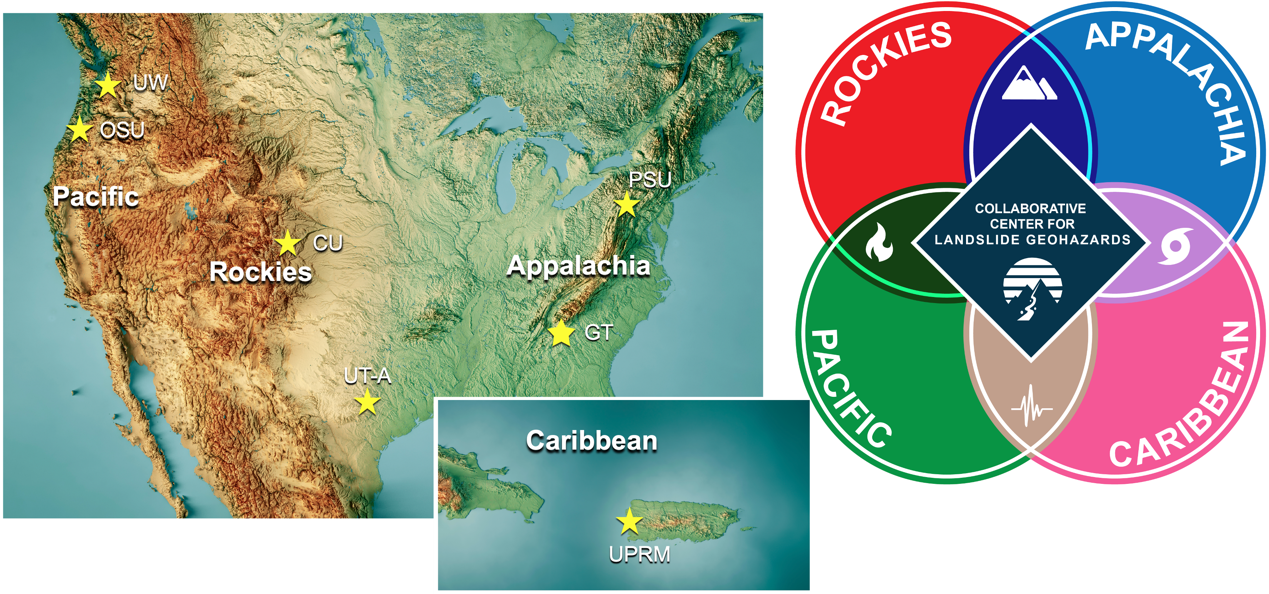
The US Caribbean territories include Puerto Rico (PR) and the US Virgin Islands (USVI). This archipelago of islands lies along the seismically active North American – Caribbean plate boundary zone. The vast majority of the ~3.5 million American citizens that reside in these territories are based on the ~9,000 km2 main island of Puerto Rico, which is characterized by a rugged mountainous interior ringed by coastal plain lowlands. While only representing only about 1% of the total national population, residents in PR are disproportionately at risk for landslide-related hazards and analyses have shown that at least 1 million residents of PR live in zones of high/very high/extreme landslide susceptibility (West et al., 2023). A 1985 bedrock landslide in Ponce, PR which took the lives of more than 130 residents remains the deadliest landslide disaster in American history and exemplifies the regional vulnerability to slope movements.
The dense population of the island, combined with natural slope conditions, a history of intense colonial agricultural practices, legacy informal road networks, weather patterns, and climate change has exacerbated landslide susceptibility across the island. Landslides in PR and USVI can be triggered by seismic events (Taber, 1919; Allstadt et al., 2021) but are much more commonly a result of extreme precipitation events that lead to soil oversaturation and resulting debris flows (Monroe, 1980; Larsen and Torres-Sanchez, 1998; Hughes and Schulz, 2020). Debris flows often affect homes, roadways, utilities, and other aspects of the natural and built environment. They contribute to remote communities being isolated after extreme events and via increased sedimentation they also threaten public drinking water supply.
Recent events like Hurricane Maria (2017) demonstrate the heightened landslide susceptibility across PR. An inventory of over 70,000 landslide sites was documented after this widespread landslide generating event (Hughes et al., 2019) and the disaster has spurred a new era of landslide science, education, and outreach in the island. The diverse geologic substrate in PR, rapid chemical weathering, and tectonic and climatic forcing together make Puerto Rico unique in the context of the United States and an unmatched natural laboratory to study landslide causes and effects.
